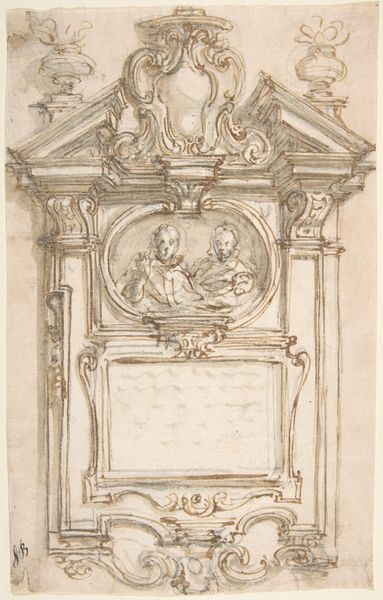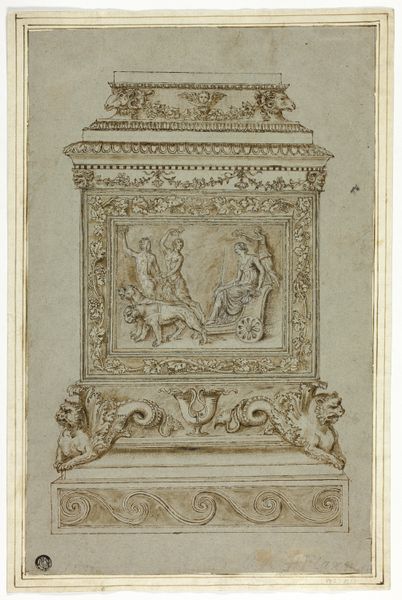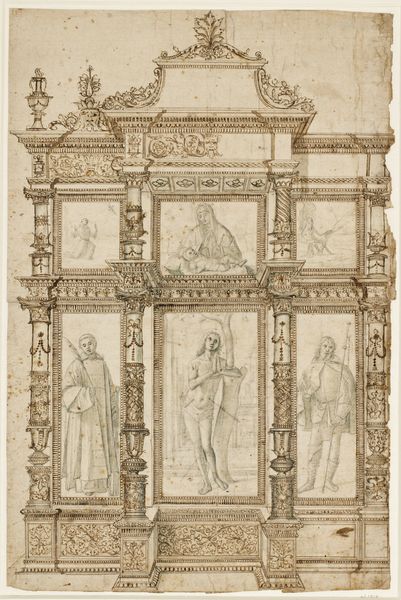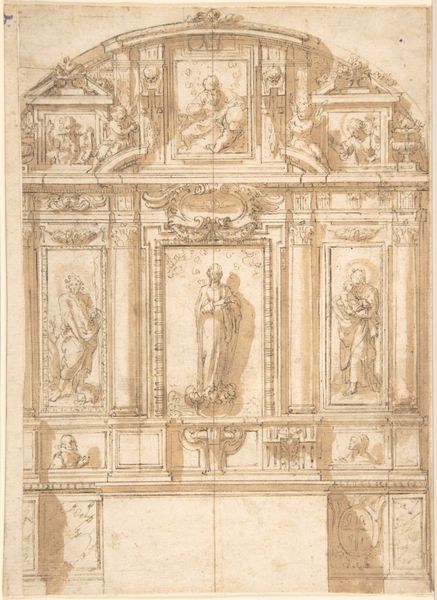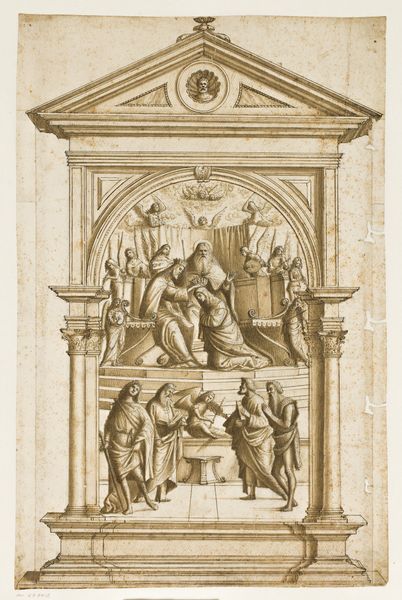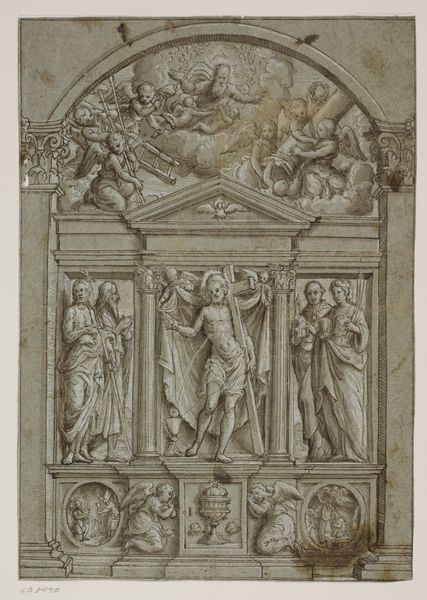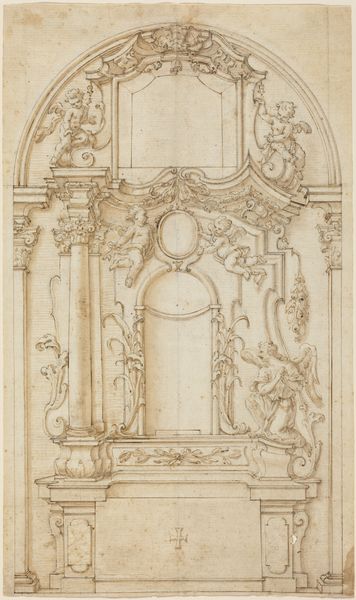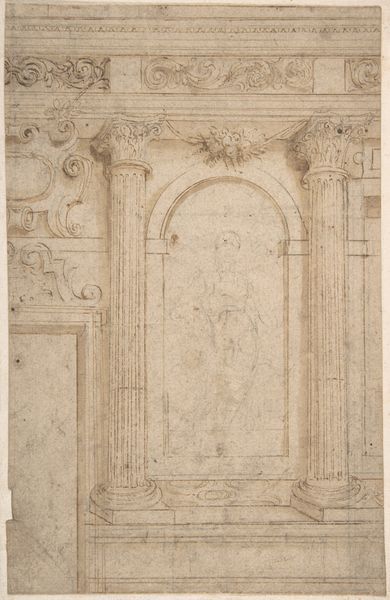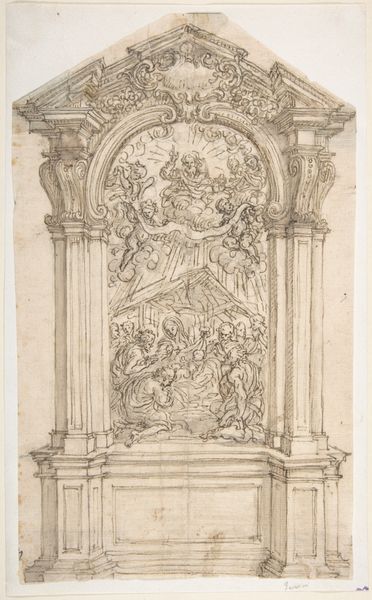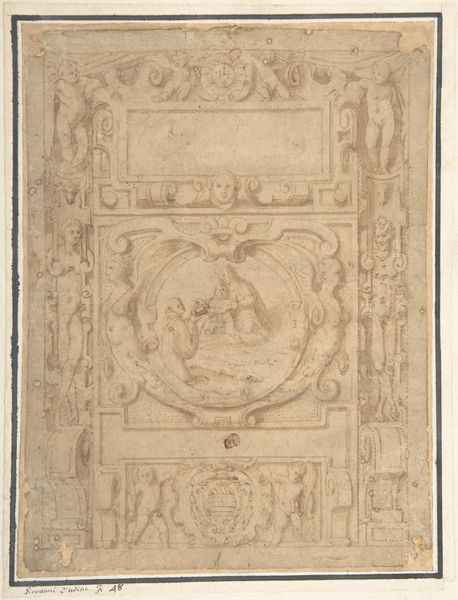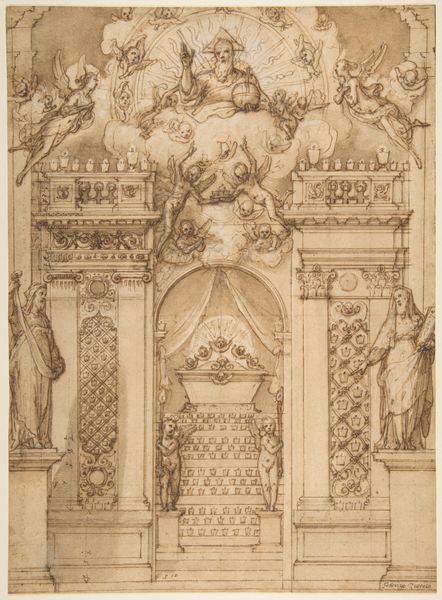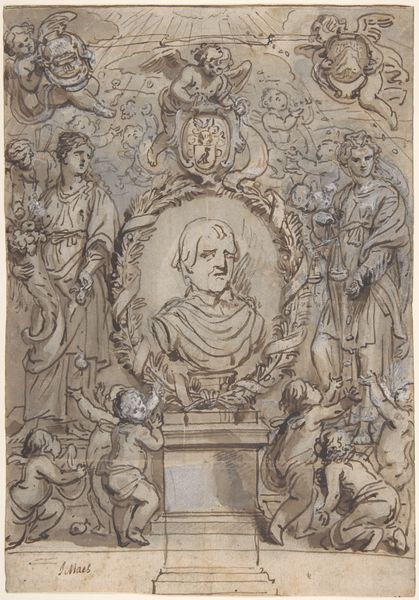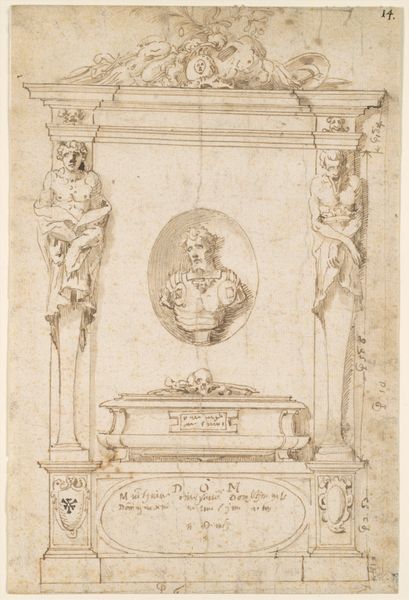
drawing, architecture
#
portrait
#
drawing
#
figuration
#
history-painting
#
italian-renaissance
#
architecture
Dimensions: 11 5/8 x 6 1/16 in. (29.6 x 15.4 cm)
Copyright: Public Domain
Editor: Here we have "Design for a Funeral Monument," an Italian Renaissance drawing from the early 16th century, created in Lombardy. I find the level of detail quite remarkable. What strikes you first when you look at this piece? Curator: The materiality is primary. This is a drawing, likely with ink, but intended to depict a monument—potentially marble, definitely expensive to produce. It suggests a shift in how artists were using drawing not just as sketch, but to visualize a monumental object intended to represent power and wealth, dependent on materials and artisanal skill. Editor: So, you see it as almost a proposal for a very elaborate object. Curator: Exactly. A drawing like this is part of the economy of artistic production. The patron, the artist, the skilled stone carvers – all dependent on this design to manifest the final product. Note also that the monument is covered in figures; who are they, and what narratives are being played out through physical form, material wealth and manual labor? Editor: That’s an interesting way to put it – it shows both power but also a network of labor needed for its realization. Would it have been typical for preparatory sketches like these to be so detailed and seemingly 'finished?' Curator: It speaks to a blurring of the lines between 'high art' and craft, or even industry. Consider this in relation to, say, the printmaking boom of the period – were reproductive technologies already changing how designs like this circulated? Was this conceived as something beyond a one-off? Editor: That gives me a lot to think about. The idea that this drawing is less a unique artistic expression and more a step in a complex process of labor and material transformation...it definitely reframes the artwork. Curator: Indeed. The drawing's purpose isn’t solely aesthetic, but fundamentally linked to the processes of creation, patronage, and societal values connected to death, legacy, and representation.
Comments
No comments
Be the first to comment and join the conversation on the ultimate creative platform.
